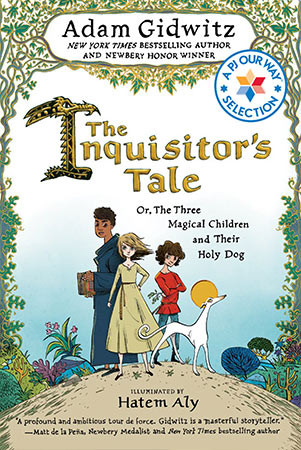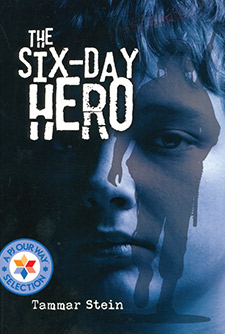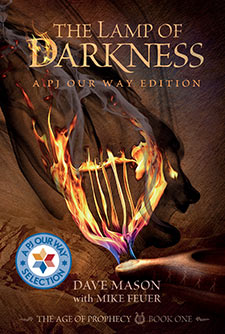The Inquisitor's Tale
The king of France has declared war against Jeanne, Jacob, William, and Gwenforte. Who will win — the king or three kids and their dog?
Average Rating
( hint: Login to leave a review! )
340 Reviews
Leave Review
What the Book Is About
Jewish Content & Values
Positive Role Models
Content Advisory
Talk It Over
More for You
What the Book Is About
In 13th century France, Jeanne sees the future in her visions, Jacob heals the sick with plants and a Hebrew prayer, and young monk William has superhuman strength. The children are on the run from King Louis IX, accompanied by their dog Gwenforte, who has come back from the dead.
A group of travelers meet at an inn and chronologically narrate the children's miraculous story from diverse points of view. Kids (and parents!) will love this action-packed, award-winning, and hugely entertaining tale. The vocabulary level here is on the high end, but medieval history has never been this relevant and exciting! The Inquisitor’s Tale was a New York Times bestseller and won a 2017 Newbery Honor Award.
Jewish Content & Values
- Jacob and his family are Jewish, and he is the nephew of the great medieval scholar and poet Rabbi Yehuda Halevi.
- Jacob tries to hide his identity to keep himself and his companions safe; he encounters antisemitism throughout his journey.
- The children witness and try to prevent the burning of twenty thousand volumes of Talmud in France.
- There are many discussions of theology in this book, explaining Jewish doctrine as well as the prevailing Christian beliefs of Europeans of the thirteenth century.
Positive Role Models
- Michelangelo di Bologna is a complex and mysterious character who guides and cares for the children until the end.
- Jeanne, Jacob, and William become faithful friends who look out for each other and even risk their own lives to serve a higher goal.
Content Advisory
This book is set in the middle ages, when knights roamed the land and battles and ale-drinking were customary activities. There are a few dramatic scenes that kids may find disturbing: a dog is killed, peasant teenagers set fire to Jacob’s home, William battles fiends in the forest with a leg pulled from his donkey (which magically re-attaches), knights are set alight by a dragon, and armies are swallowed by quicksand. None of the violence is gratuitous, and all is narrated in the spirit of a Chaucerian fairy tale. There are also several comedic sketches referring to William’s “ass,” or donkey.
Talk It Over
King Louis IX hated Jews, yet he fined the Lombard man for assaulting a Jew. Why do you think he did that?
More for You
Jacob’s uncle’s character is loosely based on the Spanish-Jewish physician, poet, and philosopher Rabbi Yehuda Halevi, who lived in Spain during the eleventh century. His greatest work, The Kuzari, is a five-part dialogue between a pagan and a rabbi, demonstrating the superiority of the Jewish faith. Rabbi Yehuda made a pilgrimage to Jerusalem at the end of his life, and legend has it that he was struck and killed by a horseman as he fell to the ground to worship at the Temple Mount.
What the Book Is About
What the Book Is About
In 13th century France, Jeanne sees the future in her visions, Jacob heals the sick with plants and a Hebrew prayer, and young monk William has superhuman strength. The children are on the run from King Louis IX, accompanied by their dog Gwenforte, who has come back from the dead.
A group of travelers meet at an inn and chronologically narrate the children's miraculous story from diverse points of view. Kids (and parents!) will love this action-packed, award-winning, and hugely entertaining tale. The vocabulary level here is on the high end, but medieval history has never been this relevant and exciting! The Inquisitor’s Tale was a New York Times bestseller and won a 2017 Newbery Honor Award.
Jewish Content & Values
Jewish Content & Values
- Jacob and his family are Jewish, and he is the nephew of the great medieval scholar and poet Rabbi Yehuda Halevi.
- Jacob tries to hide his identity to keep himself and his companions safe; he encounters antisemitism throughout his journey.
- The children witness and try to prevent the burning of twenty thousand volumes of Talmud in France.
- There are many discussions of theology in this book, explaining Jewish doctrine as well as the prevailing Christian beliefs of Europeans of the thirteenth century.
Positive Role Models
Positive Role Models
- Michelangelo di Bologna is a complex and mysterious character who guides and cares for the children until the end.
- Jeanne, Jacob, and William become faithful friends who look out for each other and even risk their own lives to serve a higher goal.
Content Advisory
Content Advisory
This book is set in the middle ages, when knights roamed the land and battles and ale-drinking were customary activities. There are a few dramatic scenes that kids may find disturbing: a dog is killed, peasant teenagers set fire to Jacob’s home, William battles fiends in the forest with a leg pulled from his donkey (which magically re-attaches), knights are set alight by a dragon, and armies are swallowed by quicksand. None of the violence is gratuitous, and all is narrated in the spirit of a Chaucerian fairy tale. There are also several comedic sketches referring to William’s “ass,” or donkey.
Talk It Over
Talk It Over
King Louis IX hated Jews, yet he fined the Lombard man for assaulting a Jew. Why do you think he did that?
More for You
More for You
Jacob’s uncle’s character is loosely based on the Spanish-Jewish physician, poet, and philosopher Rabbi Yehuda Halevi, who lived in Spain during the eleventh century. His greatest work, The Kuzari, is a five-part dialogue between a pagan and a rabbi, demonstrating the superiority of the Jewish faith. Rabbi Yehuda made a pilgrimage to Jerusalem at the end of his life, and legend has it that he was struck and killed by a horseman as he fell to the ground to worship at the Temple Mount.





